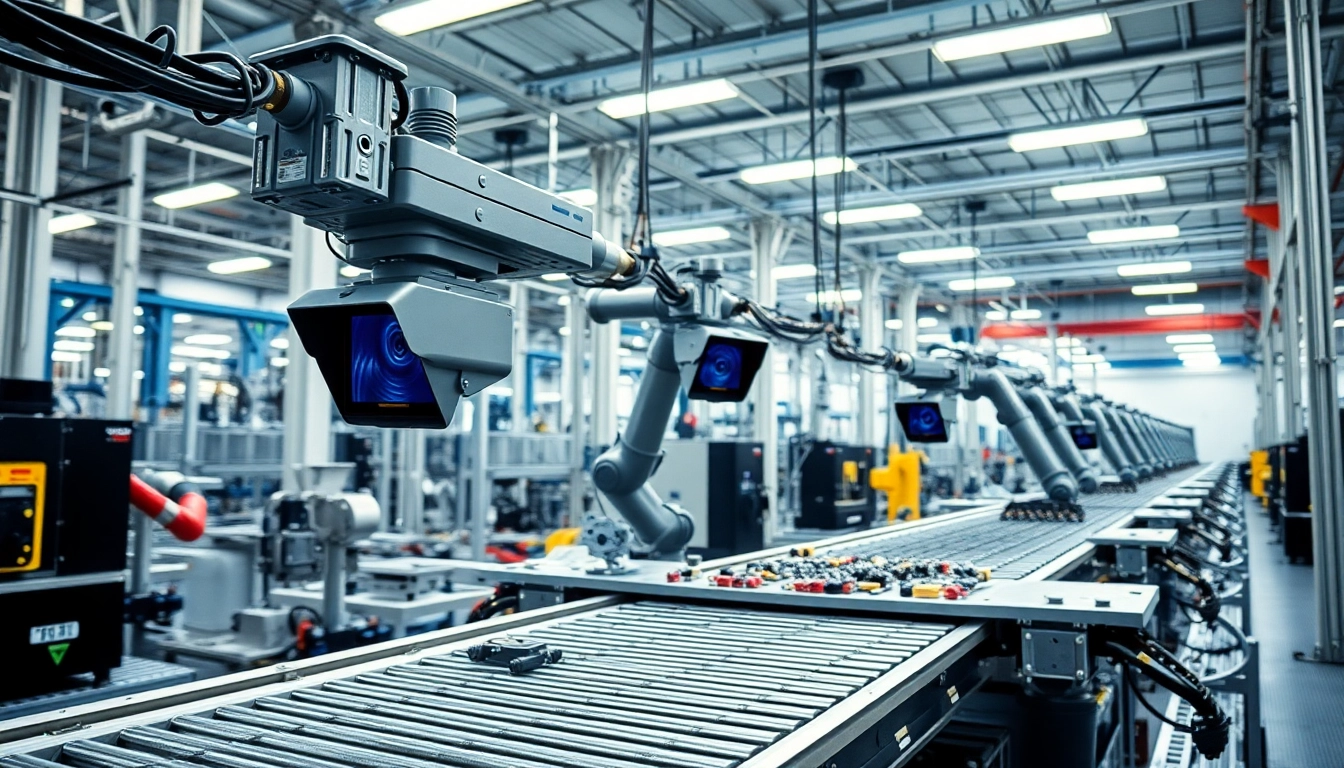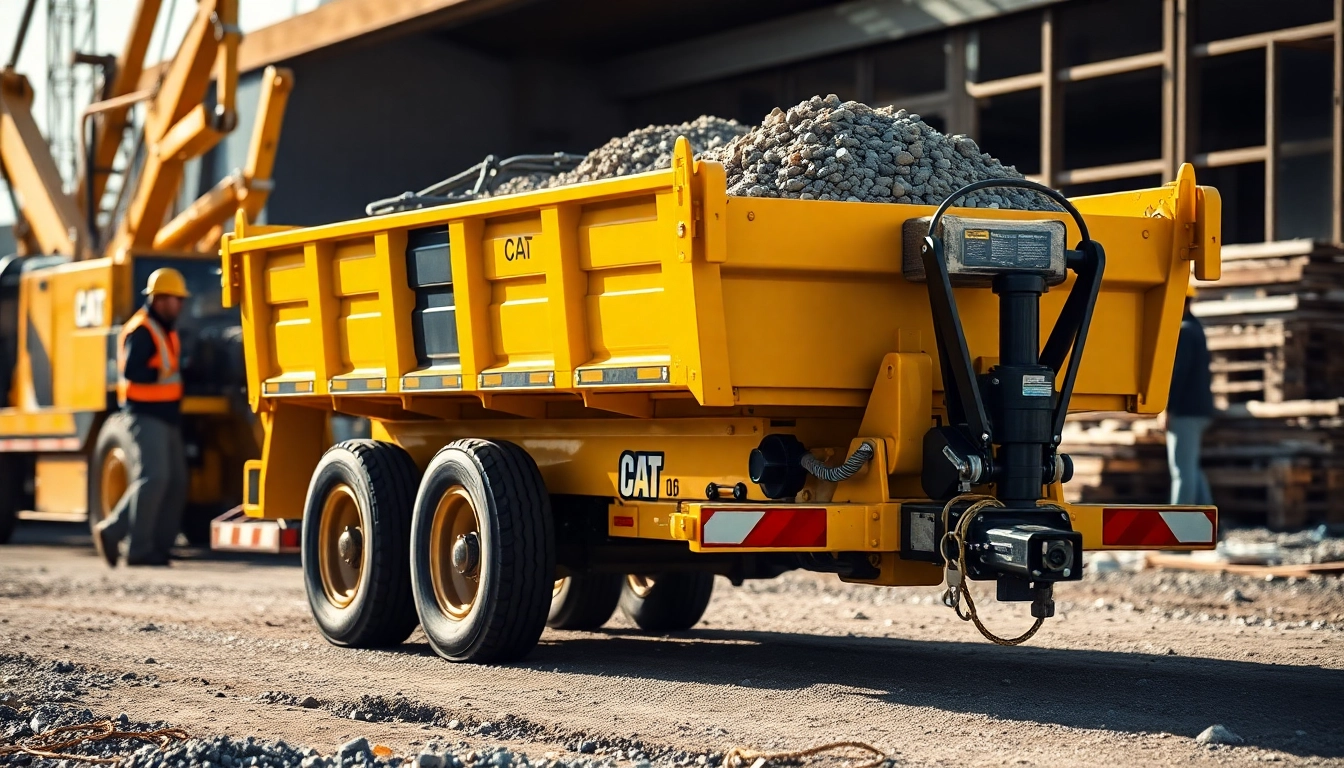Introduction to Machine Vision
Machine vision is a pivotal technology that allows machines and computers to process, analyze, and interpret visual information from their surroundings. This technology is transforming various industries by enhancing automation, quality assurance, and data collection. By utilizing machine vision, organizations are realizing heightened efficiency and productivity in tasks previously managed by human operators.
What is Machine Vision?
At its core, machine vision refers to the use of computer algorithms and cameras to automate visual inspection tasks. Unlike human vision, which is subject to fatigue and error, machine vision systems can consistently perform tasks with high levels of accuracy and speed. These systems utilize various components, including cameras, lighting, and processing units, to capture and analyze images, making them integral to industrial automation, robotics, and many other applications.
History and Evolution of Machine Vision
The roots of machine vision date back to the 1960s when researchers started experimenting with visual systems for industrial applications. Initially, these systems were rudimentary, focusing on basic tasks such as edge detection. Over the subsequent decades, with advancements in camera technology, processing power, and algorithms, machine vision evolved to include complex capabilities, such as real-time image processing and intelligent decision-making. By the early 2000s, machine vision systems had integrated artificial intelligence, allowing for sophisticated applications such as defect detection and quality control in manufacturing environments.
Key Components of a Machine Vision System
A typical machine vision system consists of the following key components:
- Cameras: Various types of cameras, including CCD and CMOS, are used to capture images of the target objects.
- Lighting: Adequate lighting is crucial for image clarity. It can include LED lights, lasers, or other specialized lighting techniques.
- Processing Unit: This refers to the hardware (like CPUs, GPUs, or specialized processors) that handles image processing and analysis tasks.
- Software Algorithms: Advanced algorithms analyze captured images to identify patterns, defects, or measurements based on predefined criteria.
- Output Interface: After processing, results are communicated through interfaces that often connect to other systems, databases, or user interfaces for further action.
How Machine Vision Works
Image Acquisition Techniques
The first step in a machine vision system is image acquisition. This is the process of capturing images from the environment. Techniques for image acquisition include:
- Static Imaging: Continually capturing images of stationary objects.
- Dynamic Imaging: Capturing images of moving objects using high-speed cameras.
- Time-of-Flight: Techniques that measure the time it takes for light to travel to an object and back, used primarily for depth perception.
- Multispectral Imaging: Capturing images at different wavelengths to acquire more information about the object, especially in inspection tasks.
Image Processing Algorithms
After images are acquired, they must be processed to extract meaningful information. Various algorithms are employed, such as:
- Image Filtering: Removes noise and enhances features important for inspection.
- Edge Detection: Identifies object boundaries by detecting discontinuities in pixel intensity.
- Pattern Recognition: Classifies objects based on predefined patterns or features.
- Machine Learning Algorithms: Utilize large datasets to train systems for improved recognition and decision-making capabilities.
Machine Learning in Machine Vision
Machine learning, particularly deep learning, has significantly enhanced machine vision capabilities. By training neural networks on vast datasets, these systems learn to identify complex patterns that might be tricky or impossible for traditional algorithms to discern. This technology can improve applications such as:
- Object Detection: Identifying and localizing multiple objects within an image.
- Defect Detection: Understanding the acceptable range of variability and identifying parts that deviate from this standard.
- Classification: Assigning categories to images based on learned features.
Applications of Machine Vision
Industrial Automation and Quality Control
In manufacturing, machine vision systems are utilized for quality control, inspecting products for defects and ensuring compliance with specifications. By automating these tasks, manufacturers can achieve faster inspection rates, reduce waste, and enhance overall productivity. Common applications include:
- Defect Detection: Identifying imperfections in products, which helps maintain quality standards.
- Assembly Verification: Ensuring that components are assembled correctly by analyzing their placements and orientations.
- Barcode Reading: Automatically scanning barcodes for inventory management and tracking purposes.
Healthcare and Medical Imaging
Machine vision technologies play a crucial role in healthcare, particularly in medical imaging and diagnostics. Applications include:
- Radiography Analysis: Analyzing X-ray images to detect anomalies.
- Pathology Imaging: Assisting in the identification of tissues and cells in biopsy samples.
- Surgical Assistance: Providing real-time image feedback to surgeons to enhance precision.
Robotics and Autonomous Vehicles
In the field of robotics and autonomous vehicles, machine vision enables machines to navigate and interact with their environments. Key applications include:
- Obstacle Avoidance: Identifying and navigating around obstacles in real-time.
- Environmental Mapping: Creating maps of surroundings using visual data for better decision-making.
- Social Interaction: Understanding human interactions by interpreting body language or facial expressions.
Benefits of Implementing Machine Vision
Increased Efficiency and Productivity
One of the primary advantages of implementing machine vision is the substantial increase in efficiency. Automated visual inspections can complete tasks much faster than human operators, leading to quicker production times and a higher throughput. This efficiency translates to:
- Faster cycle times and reduced waiting times.
- 24/7 operation without fatigue.
- Streamlined operations with reduced reliance on human intervention, allowing for reallocating workforce to more strategic roles.
Cost Reduction and ROI
Investing in machine vision can lead to significant cost savings. By reducing errors and improving product quality, companies can minimize waste and rework costs. Other financial benefits include:
- Lower labor costs associated with manual inspections.
- A decrease in returned goods due to quality issues.
- A more robust bottom line due to an improved reputation for quality products.
Improved Accuracy in Inspections
Machine vision systems are designed to operate with a high degree of accuracy, which traditional inspection methods often cannot match. Enhanced accuracy leads to:
- Consistent quality assurance, ensuring that all products meet regulatory standards.
- Reduced false positives and false negatives in inspections, leading to greater trust in automated systems.
- Better data collection for analysis and continuous improvement initiatives.
Challenges and Future of Machine Vision
Common Implementation Challenges
Despite its numerous benefits, companies may face challenges during the implementation of machine vision systems. Some common challenges include:
- Integration with Existing Systems: Ensuring compatibility with legacy systems can pose a technical hurdle.
- Data Management: Handling large volumes of image data requires robust storage and management solutions.
- Skill Gaps: A lack of skilled personnel in machine vision technology can impede implementation efforts.
Future Trends in Machine Vision Technology
The future of machine vision is bright, with ongoing advancements anticipated to revolutionize the field further. Key trends include:
- AI Integration: The continued integration of artificial intelligence will enhance decision-making capabilities in complex scenarios.
- Edge Computing: Processing data closer to the source will reduce latency and improve responsiveness in real-time applications.
- Increased Use in Various Industries: As machine vision technology becomes more accessible and affordable, its applications are expected to expand across many fields beyond manufacturing.
Case Studies of Successful Machine Vision Applications
Several organizations have successfully implemented machine vision systems that resulted in transformative benefits. For instance:
- A leading automobile manufacturer: Implemented machine vision for quality inspections on assembly lines, resulting in a 30% reduction in defects.
- A pharmaceutical company: Used machine vision in packaging lines to ensure label accuracy, which improved compliance with regulatory requirements and reduced recall risks.
- A logistics company: Employed machine vision systems for real-time inventory tracking, enhancing operational efficiencies and reducing stockouts by 25%.



